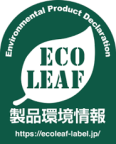
Government Procurement & Circular Economy
'Circular economy' has become container concept that covers a very broad spectrum of human activities. Over the last decades national governments and supra-governmental organizations such as the European Commission have used various policy-tools, to promote environmentally sustainable human activities and behavior that ideally have a zero environmental impact.
The environmental impact of human activities was already an important issue for Japan more than 60 years ago during its era of rapid economic growth The era made Japan one of the largest economic powers in world, but at an increasingly high environmental cost. The issues the Japanese government had to deal with in the 60s and 70s of the previous century, was a challenge similar to what has been visible in China in more recent times.
In an era where bureaucracy-guided development in Japan was much stronger than it is today, the Japanese government was quite successful in decreasing levels of pollution and after the 70s oil-shocks in the promotion of industrial efficiency in terms of resources. In the more gentrified Japan of today, after the bursting of the economic bubble in the 90s, higher environmental awareness returned. Most of the framework underpinning current Japanese public procurement policies in relation to a circular economy were formulated around the turn of the century.[1]
With climate change, global warming and growing scarcity of resources and impact of human endeavors on the global environment high on the agenda of most developed nations, Japan also has a wide range of policies in place to deal with these challenges. The country has a long history of waste management with 3R ('Reduce, Reuse and Recycle') policies in place for decades.
A broad-ranging framework for waste management and recycling, covering various sectors and was developed over the years. For instance, Japan's "Fundamental Law for Establishing a Sound Material-Cycle Society" was enacted in 2000 to promote recycling in a broad sense, not limited to government procurement.[2]
Similar to elsewhere in the world, Japanese government entities are formulating and attempting to implement a wide range of policies to promote the transfer to a circular economy. This thematic Report looks however at circular economy from a narrower perspective and focuses on one of the tools government entities have at their disposal to pursue the goal of a transfer to a circular economy: -public procurement.
Given the broad spectrum of activities the concept of 'circular economy' encompasses, this report uses the EU definition of Green public procurement (GPP) i.e., "a process whereby public authorities seek to procure goods, services and works with a reduced environmental impact throughout their life cycle", as a guiding principle.[3] Also, it attempts to take into account the approach of 'circular public procurement' that recognizes the role of public entities can play in supporting the transition towards a circular economy, where public works, goods or services are purchased that seek to contribute to close energy and resource cycles within supply chains while minimizing negative environmental impacts and waste creation.
-
[1] For a discussion on this, see for example Chika Aoki-Suzuki e.at., Report: Circular Economy in Japan. (EU Business in Japan Portal) July 2019, p. 14 https://www.eubusinessinjapan.eu/library/publication/report-circular-economy-in-japan
-
[3] European Commission, Public Procurement for a Circular Economy. Good practice and Guidance (2017) p. 4 https://ec.europa.eu/environment/gpp/pdf/Public_procurement_circular_economy_brochure.pdf
Models for implementing circular procurement: Observations in Japanese procurement
The European Commission's guidance on Public Procurement for Circular Economy proposes three models for implementing circular procurement, at system level, supplier level and product level.[1] These are shown in the figure below.
When pasting these models on the public procurement practice in Japan, observers will find that many of the activities at the various levels are present to various extents. Procurement of products will usually include a period of maintenance. Procurement of copying and printing services for example are nowadays mostly comprehensive leasing/service agreements, fulfilled by one of the large Japanese copier/manufacturers such as Fujifilm and Konica-Minolta.
Public-Private Partnership(PPP) and Private Finance Initiative (PFI) projects are gaining in popularity again among local entities, many of which struggle financially due to aging and decreasing populations and smaller budgets. Although PPP/PFI are not uniquely aimed at a transfer to a circular economy, in 2019 a record number of new projects were started, with financial involvement of the private sector for the development of educational, cultural and other public facilities.[2]
Figure 1: Circular Procurement Models

Sharing and reuse in cooperation with other organizations in Japan is mostly incidental with no concrete policies in place. Joint procurement of products is however seen more often, however more driven by cost- rather than environmental considerations.
Similar to governments world-wide, leasing and renting of equipment is rapidly becoming the norm for Japanese government entities. Many of the tenders regulated by the WTO's Agreement on Government Procurement (GPA) concern use of products and services without obtaining actual ownerships. (See for a further discussion below).
Take-back by suppliers is closely linked with rental and lease of products, but not often found as a condition involving the purchase of products. Contracts concerning overhauls, refurbishments and (to a lesser extent) remanufacturing of product used by government organization are also a common feature found in Japanese public procurement. Furthermore, Japanese government entities also sell (baikyaku) products at their end-of-life in tender procedures to be reused or recycled.
At the supplier- and product-level, procurement of goods in Japan is regulated by Japan Industrial Standards (JIS), which provide a challenging business environment for businesses from outside of the country. In recent years, global environmental challenges formulated in Sustainable Development Goals (SDGs) are increasingly incorporated in Japanese Industrial Standards.[3] While JIS standards, and to a much lesser extent standards such as ISO, are a common feature of tender specifications in Japan, explicit references to promote circularity are rarer as will be discussed further below.
From a procedural perspective, a holistic approach towards the transition to a circular economy, in which public procurement plays an important role still seems in its infancy. The Ministry of Economy Trade and Industry (METI) has formulated a "Circular Economy Vision 2020" which only pays some attention to the role government procurement can pay in achieving the goal of achieving a circular economy. METI proposes an investigation of incentives for promotion of development and usage of products made of renewables and that the government takes the initiatives in procuring such goods. [4]
While the legal framework that could give public procurement a more important role to contribute to the transition towards a circular economy has been in place for 20 years, the picture in terms of systemic implementation of Green Public Procurement practices is quite diverse and often hindered by a lack of local capacity and resources. Public procurement-driven initiatives in the country are still isolated in nature and depend on willingness of local governments.[5]
-
[1] Id. p. 6
-
[2] MLIT, Trends in PPP/PFI and activities to promote public-private partnerships (November 2020)
-
[3] Japan Industrial Standards Committee (JISC) https://www.jisc.go.jp/eng/policy/Japan_and_Industrial_Standards_2017.pdf
-
循環経済ビジョン2020 Circular economy vision (May 2020)
-
[5] For a recent comparison between EU and Japanese policies on Circular Economy and Green Public procurement Policies see: Toru Nishiyama, et. al.., "Circular Economy and Green Public Procurement Policies for preventing plastic pollution in Japan and the European Union (Institute for Global Environmental Strategies (IGES), January 2021) For a more general discussion on Circular Economy in Japan see: Chika Aoki-Suzuki et. al. "Circular Economy in Japan", (EU-Japan Centre for Industrial Cooperation)
Japanese Green Procurement: Green Procurement Law
|
Points of attention:
|
The 'Act on Promotion of Procurement of Eco-Friendly Goods and Services by the State and Other Entities' or 'Act on Promoting Green Procurement' (Guriin kounyuu hou) was enacted in 2000.[1] The basic idea is that promoting procurement of environmental goods and services by government organizations, will stimulate suppliers with developing products with a lower environmental impact. The Basic Policies formulated on the basis of this Act state that entities should take environmental considerations into account in their procurement.
There are however some points to keep in mind for foreign suppliers:
- Green Procurement does not pose unnecessary impediments to international trade and takes compliance with the WTO GPA into full account.
- Green procurement may not lead to a higher amount of procurement spending. [2]
In practice, each government entity formulates and publishes a annual green procurement policy. Corresponding with this policy the entities will also establish annual targets for the procurement of goods and services that meet the evaluation criteria for each designated procurement items (In Japanese: tokutei choutatsu hinmoku).
It is important to keep in mind that only national government entities and national independent administrative agencies (Such as those mentioned in WTO GPA Annex 3) have a legal obligation to adhere to Acts regulating green procurement. Regional and local government only have the obligation to make efforts to introduce green procurement.[3]
Designated Procurement Items
The Japanese government currently identifies Designated Procurement Items in 22 fields, covering 282 items. The overall majority of these concern goods, a list is provided in the Basic Policy (E). [4]
For each of these items, evaluation criteria and factors for consideration are specified in the Basic Policy (available in English), which is updated annually wherever found necessary.[5] For items not currently listed, ENV invites companies annually to submit proposals for designation under the Green Procurement Act, for both goods and services and for public works.[6]
| FIELDS
(CLICK FOR FURTHER DETAILS ON CRITERIA) |
ITEMS SUCH AS |
| Paper | Copier paper, toilet paper |
| Stationary | Pens, scissors, glue, waste bins etc. |
| Office furniture | Chairs, desks, shelves, whiteboards |
| Imaging Equipment | Copiers, printers, ink cartridges |
| Computers | PCs, displays |
| Office Equipment | Paper shredders, clocks |
| Mobile telephones | Cellular phones, smart phones |
| Home Electronic Appliances | Refrigerators, Televisions |
| Air Conditioners | Air conditioners, space heaters |
| Water heaters | Various methods |
| Lighting | LED, light bulbs, |
| Vehicles | Passenger vehicles, trucks, tractors, tires |
| Fire extinguishers | Fire extinguishers |
| Uniforms and work clothing | Caps, shoes, Uniforms |
| Interior fixtures and bedding | Curtains, carpets, blankets |
| Work gloves | Work gloves |
| Other textile products | Tents, safety nets, banners |
| Facilities | Solar power generation systems, solar heating systems, fuel cells, garbage disposal equipment, water saving equipment, software license for telework, web conferencing systems |
| Stockpiles for disasters | Drinking water, quick cooking rice, portable generators |
| Public works projects | Materials: soil, slag, cement, paints, compost, lumber, floor coverings, toilet bowls, plywoodMachinery: low emission, low noise machinesMethods: recycling treatment of sludge, road surface,Others: greening of rooftops, porous pavement |
| Services | Energy conservation diagnosisPrintingCafeteriasRecapped automobile tires (rethreading)Automobile maintenanceManagement of government officesLandscape managementSmoke detector testsCleaningCarpet tile cleaningTreatment of confidential documentsPest controlTransportation and deliveryPassenger transportation (cars)Fluorescent lighting servicesRetail business operating in government buildingsLaundry and dry cleaningInstallation of vending machines for beveragesMoving servicesMeeting managementProvision of imaging equipment |
| Trash Bags | Trash bags |
[1] For a provision translation see Ministry of the Environment (ENV) http://www.env.go.jp/en/laws/policy/green/index.html
[2] ENV, Basic Policy on Promoting Green Procurement (Provisional Translation) February 2019, page 3
[3] Green contracting Law Guide. http://www.env.go.jp/policy/ga/bp_mat/01whole-02/en_full.pdf#page=3 (E)
[4] ENV, Basic Policy on Promoting Green Procurement, (March 2021) (E)
[5] http://www.env.go.jp/policy/hozen/green/g-law/archive/refe/tokutei.pdf (J)
[6] ENV, Green Procurement Law.net, Invitation for proposals http://www.env.go.jp/policy/hozen/green/g-law/teianbosyu.html (J)
Eco-Labelling
Japan has many different eco-labels, varying in scope and validity The Ministry of the Environment maintains a database (J) of Eco-labels used in the country. At the Ekoshouhinnetto portal (J) operated by the Green Purchasing Network, a large number of products that have obtained ecological certification are listed.
Below are two of the more frequently used eco-labels in found tenders.
Eco-mark

Suppliers can choose to use the Eco-Mark (J) as an indicator that their product is meeting the criteria in laid down in the Green Procurement Act. With tender specifications often including the possession of the Eco-mark, this can reduce paperwork in case proving that the product meets the environmental standards is required. It should be noted however that not all items listed under the Green Procurement Act are covered by the Eco-mark.
In order to obtain this Eco-mark, companies will have to undergo certification by a third-party organization, called the Japan Environment Association (JEA). The fee for examination is ¥22,000, with submission of documentation in Japanese required. After obtaining the Eco-Mark, an annual license fee based upon the amount of sales and fees for issuance of the Eco-mark needs to be paid. Information in English concerning the certification is available at the Ecomark website.
Eco-Leaf

Alternatively, suppliers can choose to be certified by the Sustainable Management Promotion Organization and obtain an EcoLeaf Environmental Label. The number of labels issued is however smaller than the Eco-mark. Here, the LCA- (Life-Cycle Assessment) method is used to quantitatively show environmental information of products through life cycle stages from the extraction of resources to manufacturing, assembly, distribution, use, discarding and recycling. The certification is in conformity with ISO type III environmental declarations (ISO 14025). With the focus on process, it will require adhering to set Product Category Rules (PCRs) and internal/external auditing. The organization estimates costs at ¥25,000 per product.
Premium Standards
On top of the Green Procurement framework of designated items, there are also additional guidelines for government entities to set even higher environmental standards since 2014. Based upon the 'Premium Standards Establishment Guidelines' (J), designated environmental goods that
- meet the highest environmental standards set by Green Procurement Law (such as Eco Mark)
- have assessed by multi-stage procedures (Such as possessing the Unified Energy-saving label (J))
- have obtained carbon-offset certification (J)
should be pursued in procurement by government organizations. In practice however, reference to these Premium Standards is rarely found in tender documentation.
Green contracting
Beside the Green Procurement Act, the Japan also has a law that aims more specifically at the reduction of greenhouse gas emissions through government procurement contracts since 2007. Having a much longer name, it is usually called the "Green Contract Law" (Guriin keiyaku hou) and has been in force since 2007.[1]
The Act requires government entities, when they conclude a contract, while ensuring that there is sufficient competition between suppliers, that
- beside price, the environmental performance of the product is assessed,
- contracts are concluded with suppliers that possess products with the best environmental performance and
- government entities systematically implement these practices.
While for national government entities and independent administrative entities the Act provides a number of legal obligations, at the regional and local level entities have an obligation to make an effort to promote green contracting as shown in the table below.
Green Contracting Law obligations
|
National government |
Regional government |
|
|
Source: ENV English 2014
The Green Contracting Act distinguishes seven contract categories:
- Supply of electric power
o Introduction of a 'bottom-cut methodology, (sosogiri houshiki) where requirements to participate in the bidding process are set from the perspective of reducing greenhouse gases. Winning bidder is then selected based on price from among those who meet these requirements.
- Leasing and procurement of automobiles
- Introduction of Overall Greatest Value Assessment, when leasing or procuring vehicles.
- Contracts concerning the procurement of marine vessels
- Introduction of an 'Environmental Impact Marine Vessel Design Proposal' method, where technological proposals are evaluated on elements such as creativity, technological capabilities and expecience of designers and the design organization.
- Introduction of bottom-cut methodology for smaller marine vessels
- ESCO (Energy Service Company) project (Projects for energy conservation) contracts.[2]
- Design of architectural structures
- Introduction of environmental impact proposal methods
- Maintenance and management of architectural structures
- Treatment of industrial waste
- Introduction of bottom-cut methodology
The bottom-cut methodology incorporates environmental impact credentials of suppliers on 5 factors namely, CO2 release, unutilized energy, renewable energy, expected transfer of Renewable Energy Certificates and energy saving/power reduction information provision into the selection of appropriate suppliers.[3]
[1] For translation of this Green Contracting' Act see https://cutt.ly/CbcgP7E
[2] See for outline in Japanese ENV, https://www.env.go.jp/council/35hairyo-keiyaku/y352-01/ref06-2.pdf
[3] https://japancredit.go.jp/case/kankyo/
Green procurement Law and Green contracting Law: a comparison
Between the two laws currently regulating government procurement in Japan the following comparison is possible:
|
|
"Green Procurement" |
"Green Contracting" |
|
Features |
|
|
|
Aim |
|
|
|
Products covered |
|
|
|
Entities covered |
|
|
|
Content |
|
|
Source: ENV
Access to the full Report
The full report is only available to EU-headquartered businesses. To obtain your copy of the report, please use the registration form and select the report of your choice. Please note that it will take a few days to review your request.
Webinar
On June 30, 2021, JTPP Helpdesk organized a webinar to present the thematic report on public procurement & circular economy. The presentations by the speakers and recording of the webinar are available here.









